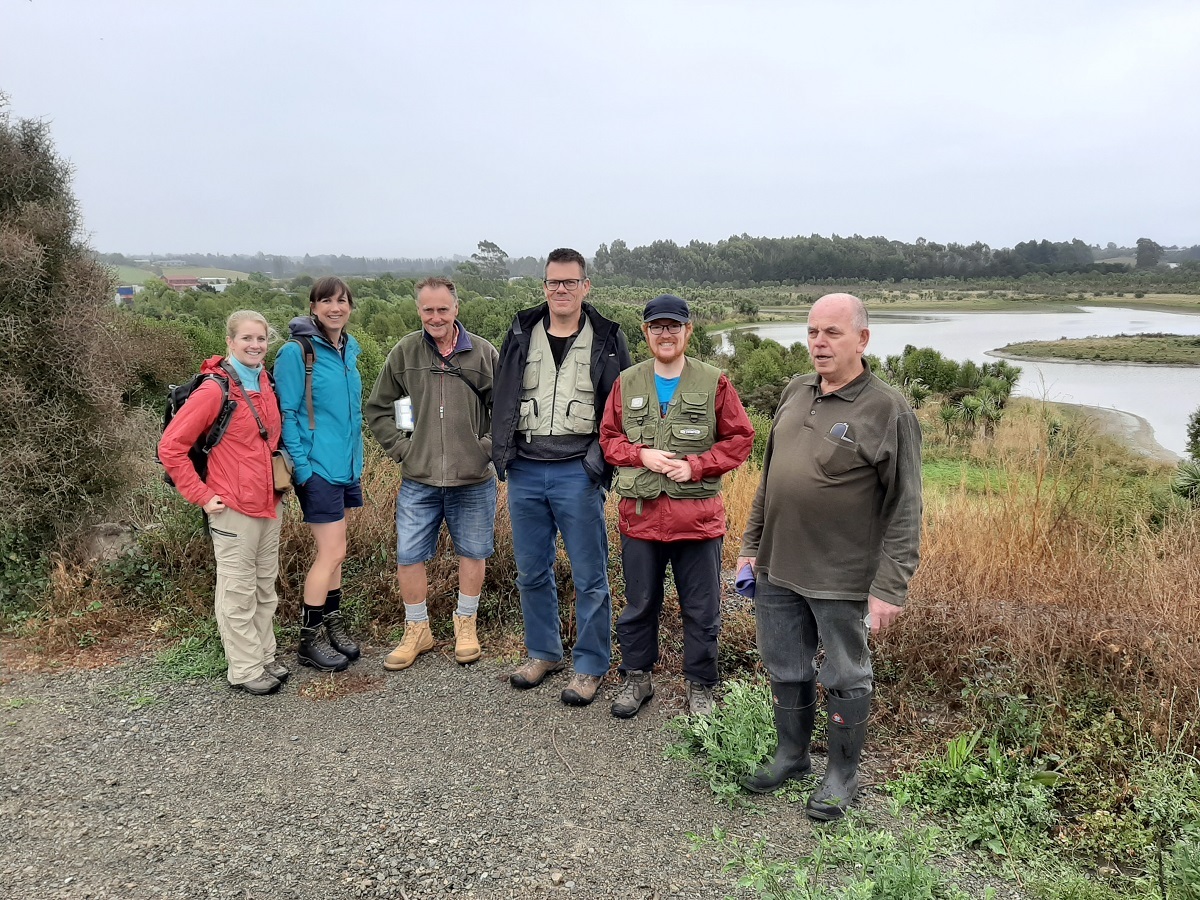On 3–4 March, Dr Cor Vink, Curator Natural History and Johno Ridden, Associate Curator Natural History attended a Bioblitz in Timaru, Johno's hometown.

A bioblitz is an event where people search for and identify every organism they can in an area. This includes plants, animals, fungi and invertebrates. One great tool to assist this process is the iNaturalist app, which anyone can download on their phone. You can use it to photograph something and an expert can identify it remotely as long as the photo is of good quality.
This bioblitz was held at Otipua Wetland, which in 1997 was converted from a pastoral paddock to a native restoration site. The event was organised by Rhys Taylor of Environment Canterbury.
A group of volunteers, experts and people from local organisations scoured the wetland for as many organisms as they could find. The experts then identified the many species found in the wetland. For example, Brian Patrick of Wildlands Consulting who specialises in lepidoptera (moths) made a check list of the moth species found. Philip Howe, the Director of South Canterbury Museum who has a particular interest and expertise in beetles, found this Alexander Beetle (Megadromus antarcticus), which as of this recording is the most southern distribution known for this species.
Cor and Johno arrived later on Tuesday 3 March from Christchurch in a hired electric vehicle (keeping their carbon footprint low), to go on a night-time excursion with Rhys.

The focus of the evening stroll was arachnids, predominately spiders as Cor is one of New Zealand leading authorities on the group. Their small group sleuthed around the grassland flats and regenerating native vegetation.
One interesting specimen they found was a pirate spider (Australomimetus mendicus) which is a group currently being studied as not a lot is known about them. Some of the spiders were collected and will be incorporated into Canterbury Museum's collection.
You can find all the observations from the bioblitz here.





